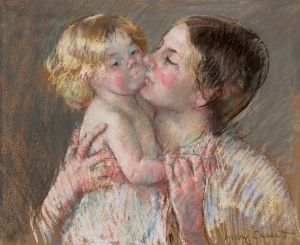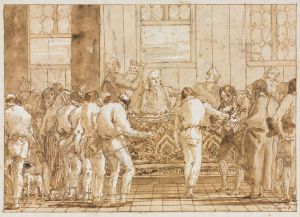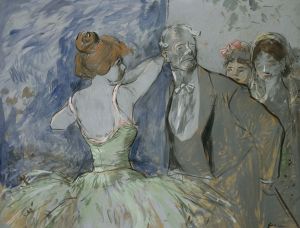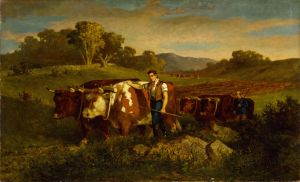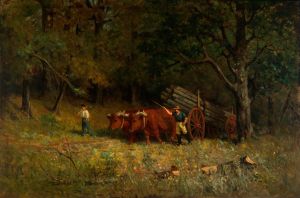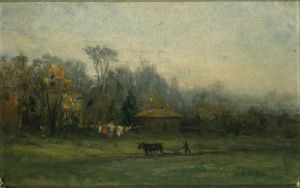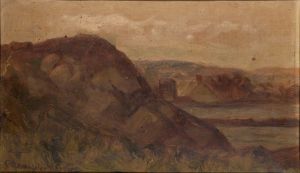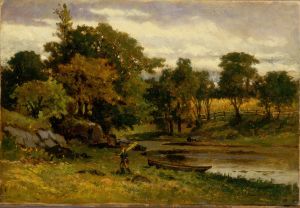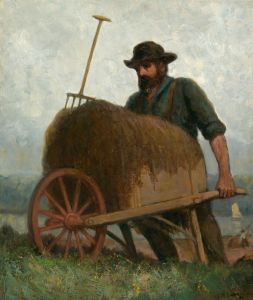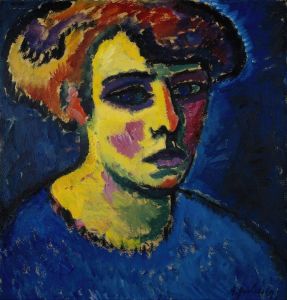
The Salute
A hand-painted replica of Edward Mitchell Bannister’s masterpiece The Salute, meticulously crafted by professional artists to capture the true essence of the original. Each piece is created with museum-quality canvas and rare mineral pigments, carefully painted by experienced artists with delicate brushstrokes and rich, layered colors to perfectly recreate the texture of the original artwork. Unlike machine-printed reproductions, this hand-painted version brings the painting to life, infused with the artist’s emotions and skill in every stroke. Whether for personal collection or home decoration, it instantly elevates the artistic atmosphere of any space.
Edward Mitchell Bannister was a prominent African American artist in the 19th century, known for his contributions to the American art scene during a time when racial barriers were significant. However, there is no specific record or widely recognized painting titled "The Salute" by Edward Mitchell Bannister. Bannister's works are primarily known for their landscapes and pastoral scenes, reflecting the influence of the Barbizon school and the Hudson River School, which were popular during his time.
Bannister was born in 1828 in St. Andrews, New Brunswick, Canada, and later moved to the United States, where he became an influential figure in the Providence, Rhode Island, art community. His journey as an artist was marked by perseverance and dedication, as he faced racial prejudice throughout his career. Despite these challenges, Bannister achieved significant recognition and success.
One of Bannister's most notable achievements was winning a bronze medal at the 1876 Philadelphia Centennial Exposition for his painting "Under the Oaks." This accolade was particularly significant because it was awarded during a period when African American artists were often marginalized. The recognition helped to establish Bannister's reputation as a skilled and respected artist.
Bannister's work is characterized by its serene and contemplative qualities, often depicting rural landscapes with a focus on light and atmosphere. His paintings frequently feature elements such as trees, meadows, and bodies of water, capturing the tranquility and beauty of nature. Bannister's style reflects the influence of the Barbizon school, which emphasized naturalism and the depiction of rural life.
Throughout his career, Bannister was actively involved in the art community in Providence. He was a founding member of the Providence Art Club, one of the oldest art clubs in the United States, which provided a platform for artists to exhibit their work and engage with fellow artists. Bannister's involvement in the club demonstrated his commitment to fostering a supportive environment for artists and promoting the arts in his community.
Bannister's legacy as an artist is significant not only for his artistic contributions but also for his role as a trailblazer for African American artists. His success and recognition in the art world during a time of racial discrimination serve as an inspiration for future generations of artists.
While there is no specific information available about a painting titled "The Salute" by Edward Mitchell Bannister, his body of work continues to be celebrated for its beauty and its reflection of the natural world. Bannister's paintings are held in various collections, including museums and galleries, where they continue to be appreciated by art enthusiasts and historians alike.





